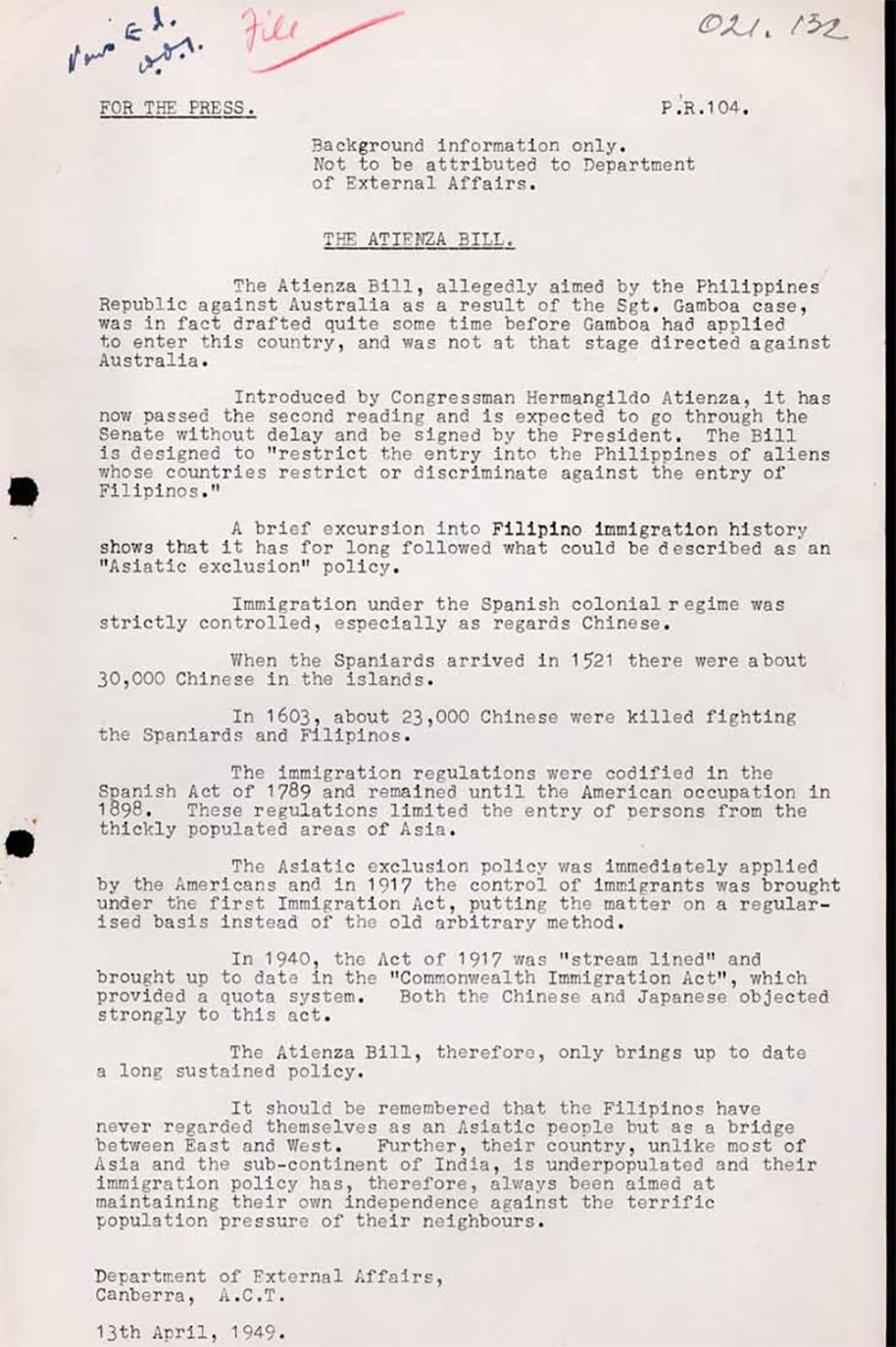
Information given to the press but 'not to be attributed to the Department of External Affairs', regarding the Atienza bill.
Aboriginal and Torres Strait Islander people should be aware that the National Archives' website and collection contain the names, images and voices of people who have died.
Some records include terms and views that are not appropriate today. They reflect the period in which they were created and are not the views of the National Archives.


Information given to the press but 'not to be attributed to the Department of External Affairs', regarding the Atienza bill.
[Three handwritten annotations at the top of the page. Annotation in blue ink is illegible. In red ink, 'File'. In black ink, '021.132.']
[Underlined heading:] FOR THE PRESS.
P.R.104.
Background information only.
Not to be attributed to Department of External Affairs.
[Underlined heading:] THE ATIENZA BILL.
The Atienza Bill, allegedly aimed by the Philippines Republic against Australia as a result of the Sgt. Gamboa case, was in fact drafted quite some time before Gamboa had applied to enter this country, and was not at that stage directed against Australia.
Introduced by Congressman Hermangildo Atienza, it has now passed the second reading and is expected to go through the Senate without delay and be signed by the President. The Bill is designed to "restrict the entry into the Phillipines of aliens whose countries restrict or discriminate against the entry of Filipinos."
A brief excursion into Filipino immigration history shows that it has for long followed what could be described as an "Asiatic exclusion" policy.
Immigration under the Spanish colonial regime was strictly controlled, especially as regards Chinese.
When the Spaniards arrived in 1521 there were about 30,000 Chinese in the islands.
In 1603, about 23,000 Chinese were killed fighting the Spaniards and Filipinos.
The immigration regulations were codified in the Spanish Act of 1789 and remained until the American occupation in 1898. These regulations limited the entry of persons from the thickly populated areas of Asia.
The Asiatic exclusion policy was immediately applied by the Americans and in 1917 the control of immigrants was brought under the first Immigration Act, putting the matter on a regularised basis instead of the old arbitrary method.
In 1940, the Act of 1917 was "stream lined" and brought up to date in the "Commonwealth Immigration Act", which provided a quota system. Both the Chinese and Japanese objected strongly to this act.
The Atienza Bill, therefore, only brings up to date a long sustained policy.
It should be remembered that the Filipinos have never regarded themselves as an Asiatic people but as a bridge between East and West. Further, their country, unlike most of Asia and the sub-continent of India, is underpopulated and their immigration policy has, therefore, always been aimed at maintaining their own independence against the terrific population pressure of their neighbours.
Department of External Affairs,
Canberra, A.C.T.
13th April, 1949.
Learn how to interpret primary sources, use our collection and more.
